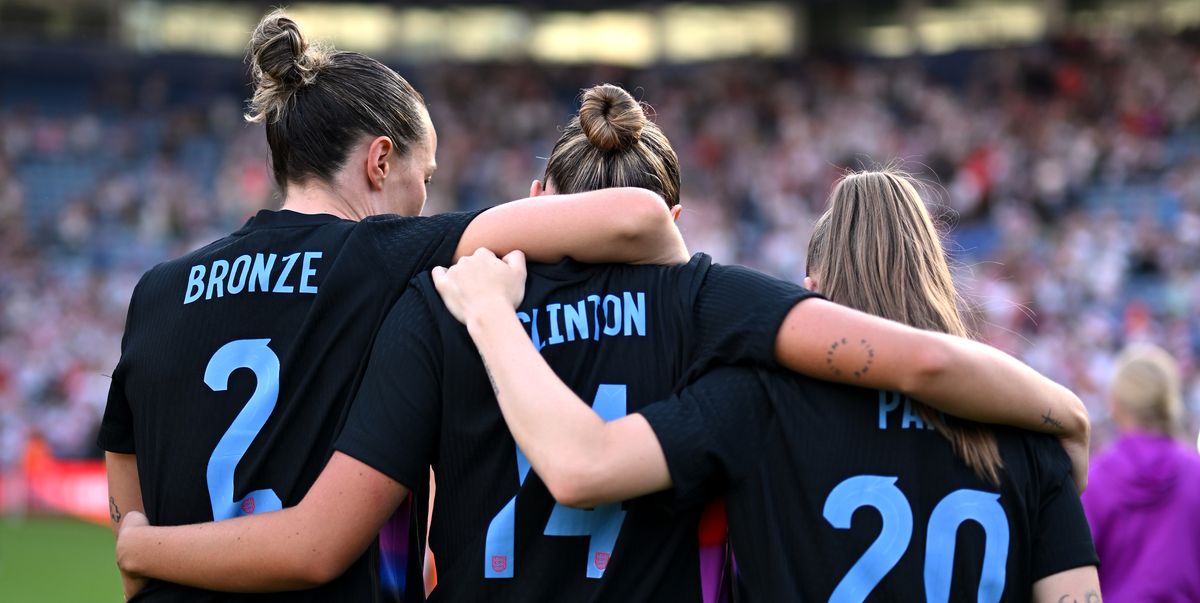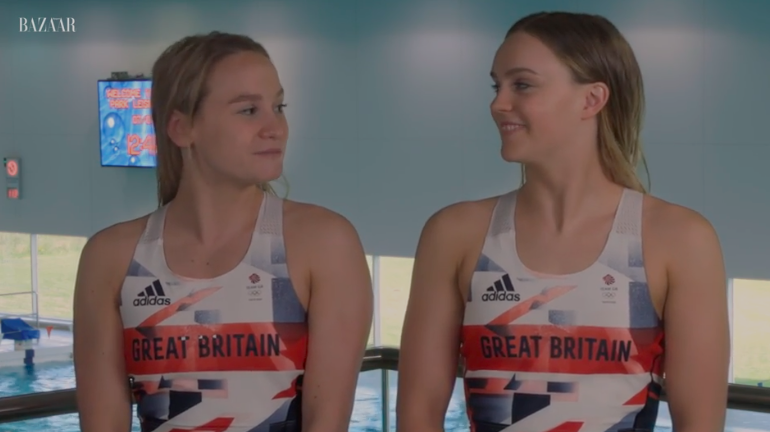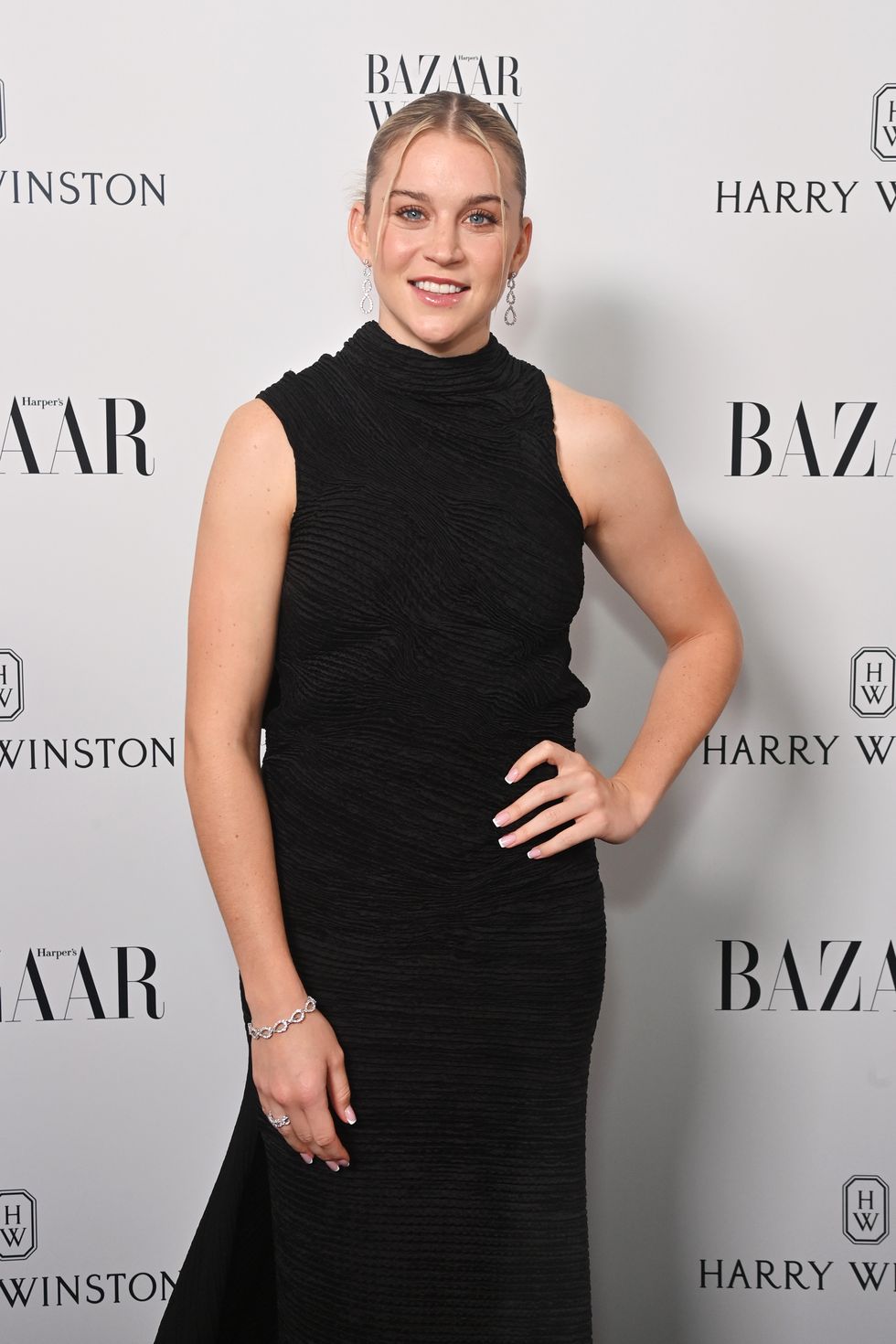It’s hard to believe that it’s already been three years since the England Lionesses finally brought football home. Since that moment in 2022, there’s been an undeniable increase in the profile of the women’s sport, with players like Jill Scott (Queen of the Jungle), Mary Earps (Sports Personality of the Year), and Alessia Russo (recipient of a Harper’s Bazaar Women of the Year prize) all going on to become household names. In June, Nielsen was projecting that women’s football’s fanbase would reach the top five of global sports, while a record 11.7 million people tuned in to watch England’s defeat by the USA in 2023’s World Cup final – accounting for 50 per cent of the available audience in the country at that time. To say that the Lionesses have popularised the game would be an understatement.
So with the 2025 Women’s Euros now underway, it’s perhaps unsurprising to see that fashion brands are finally taking women’s football seriously. The England squad are being outfitted by high-street stalwart, Marks & Spencer. Scandi brand Rotate is the official formalwear partner for the Danish team, while designer J. Lindeberg is the equivalent for the Swedish team. And perhaps most notable for the fashion crowd, Aligne, the ultimate British cool-girl brand, has just announced that it is the style partner of the Wales women’s football team, with its Summer Utility Top, Rae Relaxed Scoop Neck Blazer and Amelia Split Tailored Trousers all being worn by the squad.
“Female athletes are the game-changers of our generation,” explains Aligne’s CEO Ginny Seymour. “What they are doing on and off the pitch inspires me. When I think of how I want to be defined – strong, confident, determined – they are all the adjectives I associate with female athletes. Aligne is a brand based on an ethos of confident dressing, and to be able to showcase that confidence off the pitch is so special to me. It is the Wales women’s team’s first visit to the Euros – and I am sure not the last – so to be able to have them arrive in style and walk out on the pitch feeling confident gives me goosebumps.”
Other female athletes – perhaps most notably tennis players – have long been associated with fashion brands, so it’s nice to see female footballers finally getting the recognition they deserve. “Fashion brands are finally realising what’s been there all along: these women are not just elite athletes but they’re aspirational, stylish, and deeply in tune with the values of modern audiences,” says Nina Beeston, the director of partnerships and PR at Wasserman, a sports and media talent agency. “Rising rights fees proves the market is willing to pay for women’s football, so for fashion brands, it’s a signal to jump in. For a long time, women’s football lacked the visibility and commercial backing that brands typically look for. Everything changed after the Lionesses won the UEFA Women’s Euros 2022. It wasn’t a lack of talent or style – it was a lack of access. Fashion follows visibility and, until recently, that visibility simply didn’t exist. Visibility, as we know, fuels perceived value.”
It’s a no-brainer for fashion brands. According to Loughborough University’s David Sergeant, fans of women’s sports are 45 per cent more likely to consider or purchase from a sponsor brand compared to men’s sports, while female fans are 2.8 per cent more likely to purchase a product recommended by a female athlete. “Female players and fans are more fashion-focused than their male counterparts – Beckham’s sarong aside,” says Ross Watson, managing partner at MC Saatchi. “When she’s not the face of Gucci or fronting Wonderland and GQ magazine covers, Leah Williamson announced her relationship to Elle Smith through a viral fashion TikTok trend. We’re talking about the single biggest passion of female players and fans outside of football, so it’s natural for the brands to start to tap into this audience. They are a more credible and authentic voice and partner for fashion brands.”
For fashion and football journalist Felicia Pennant, founder of Season magazine, Aligne’s partnership with the Wales squad feels the most authentic. “The [projects they have worked on] have been incredibly supportive of female athletes and women in sports,” she explains. “They’ve collaborated with Lucy Bronze [her first collection will debut at London Fashion Week in September], and rugby players like Tatyana Heard and Zoe Harrison, as well as Gotham F.C. They are a great example of a brand doing this year-round, and not just jumping on the Euros hype. After the end of July, when the tournament is over, will everything go quiet again? It’ll be interesting to see if any of these brand partnerships become year-round.”
As Beeston explains, for the women’s game to “catch up” with the men’s, there needs to be consistent investment in media rights, marketing and visibility. “When women’s matches are given prime-time slots and the same level of production and promotion as men’s games, the commercial opportunities will naturally follow,” she says. “We’ve already seen major progress in the last five years; the WSL’s recent £65 million domestic rights deal is a huge step forward, and globally the NWSL signed a $60 million-a-year deal covering multiple broadcasters. But there’s still work to be done. Players have proven they can carry campaigns, sell out stadiums, and move culture – the perception of the women’s game has changed to an elite level sport in its own right, independent of the men’s game.”
“Women’s sport is hot right now, it’s hit the mainstream,” adds Pennant. “I just hope that these things are as authentic as possible and are innovative and pushing things forward. It’s also important that women’s football is as inclusive and inter-sectional as possible. There’s still a long way to go in order for women of colour, or those with disabilities, to feel included, for example.” And while fashion brands have started to pay attention to women’s football, there’s still a long way to go. After all, while fine jewellery brands and historic fashion houses are utilising tennis players and Olympic athletes in their campaigns, there aren’t any female footballers who have yet achieved the same. So, what does the future hold?
“I see women’s football becoming a central part of the fashion and cultural landscape,” predicts Beeston. “We’ll see more players on front rows, in brand campaigns, and collaborating on collections – not just as ambassadors, but as co-creators. With the continued growth of streaming and global media rights – like Netflix hosting future Women’s World Cups – the reach will only expand. Players like Alessia Russo won’t just be athletes; they’ll be style leaders, cultural voices and household names. The momentum is real and fashion has the opportunity to help shape where it goes next and be part of this cultural shift. These hugely talented women are strong, trailblazing and hugely influential – all traits that a fashion brand wants to encapsulate. It’s a hugely exciting time.”










